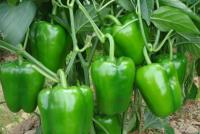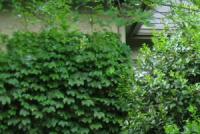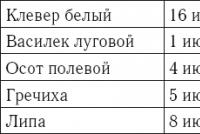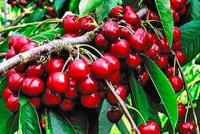With what is next to the plum in the garden. Compatibility of fruit trees with each other
X chemical compatibility and replanting of woody plants
Knowledge of the issue of compatibility of plants for growing them in culture is really very important and affects the interests of every farmer and every amateur gardener. I agree with the authors of the letters that the compatibility of perennial woody plants, which include fruit trees, berry bushes, and ornamental woody plants, is rarely written in popular literature for gardeners. Yes, and published in this information are too scarce, concerning only a small number of species of such plants. True, in the scientific literature on this topic the amount of information about the compatibility of these plants is much less than about the compatibility of various herbaceous plants. But, nevertheless, such information is available.
Since the times of antiquity, it is known that two plants growing nearby experience one another. This influence was called allelopathy. The essence of allelopathy is the mutual influence of plants on each other as a result of the release of various chemical substances. Substances secreted by higher plants, inhibiting or stimulating the development of higher plants, called colin. All colins are various organic physiologically active substances entering the environment of plants in the form of in vivo or posthumous secretions directly or indirectly involved in the chemical interaction of plants. There are many mechanisms for the appearance of colins in plant habitats. I will try to briefly talk about the most common.
Leaching of substances from living leaves with sediments. Researches of scientists found that during rains some minerals (calcium, potassium, magnesium, sodium, manganese, phosphorus, nitrogen) and various organic compounds (sugars, alkaloids, phytohormones, tannins, phenolic compounds, organic acids pigments, etc.). Some of these substances play a large role when exposed to nearby growing plants. For example, direct research has proven leaching of very phytotoxic substance from black walnut leaves by raindrops. Subsequently, this was confirmed in the leaves of walnuts and Manchurian nuts and in general of all species of the genus Yuglans. It turned out that not a single field crop grows under the black nut. Harmful it affects tomatoes and other vegetable crops. Scientists have established that the inhibition of growth or lack of vegetation under the crown of a black walnut is caused mainly by the poisonous properties of the drops falling from the tree. The juice of walnut leaves is poisonous. If a diluted juice to smear a horse, then flies, gadflies and gadflies do not sit on it. Later, a substance identical to a juglon, which is a toxin not only for field and vegetable plants, but also for most fruit and berry plants, was obtained from the green shells of nuts. It was noticed that in the plantations near the walnut, apples and pears, and the stone trees, grow poorly, are strongly oppressed, and the young plantings in the vicinity of the nut are killed. It is necessary to know our amateur gardeners, who grow Manchurian walnut on the site.
Volatile discharge from the leaves. The release of volatile gaseous compounds by intact intact plant leaves has long been known. The phenomenon of allergies or toxic effects of certain plant odors on sensitive people is well known. This is most often associated with the release of essential oils and other aromatic compounds or harmful volatile substances, such as the same juglone - walnut, Manchurian and other nuts - or clematin - clematis (clematis). Organic substances released into the atmosphere by whole leaves directly affect the aerial part of plants or affect the microflora, and through it - the growth of plants. But the number of studies devoted to this type of plant excretion is currently small. But on the other hand, the volatile emissions of pounded, crushed leaves of plants are very widely studied. They are called phytoncides. The nature of these secretions in most cases is the most diverse and not yet studied. Phytoncidal activity has the vast majority of plants. Studies have shown that phytoncides affect seed germination, plant growth and photosynthesis. A possible way of their influence in plant communities is through the stomata of leaves and through their various injuries. However, it is not worth overestimating the effects of phytoncides in plant communities. Since phytoncides are inherent only in crushed leaves, and their number is several hundred times less than whole ones.
Hard discharge from the leaves. Insect damage can lead to the formation of specific solid secretions on the leaves and aboveground parts of plants. The “honeydew”, which appears after leaf damage by aphids, is well known. You can often observe the appearance of "honey dew" in June, July, especially when hot weather sets in, on leaves of maple trees, lindens, elms, willows, lilacs, fruit trees without being damaged by insects. Naturally, such a mass release of sugar and other various organic substances affects the surrounding vegetation. In addition, plants with branches and trunks damage often produce gum and gum, for example, gum on cherries, plums and apricots, which can also affect other plants.
Root selection. In the course of their life, the root systems of plants emit a large number of different substances, some of them are phytotoxic in nature. Thus, plants produce various organic acids: oxalic, acetic, malic, salicylic, cinnamic, chlorogenic, and many other acids, for example, amino acids, nucleic acids, often exhibiting toxic properties with respect to other plants. Amino acids and sugars secreted by plants are usually rapidly processed by microorganisms and affect other plants only indirectly. Of great importance in the interaction of higher plants have root secretions of various biologically active substances, in particular enzymes, vitamins, alkaloids, glycosides, antibiotics, natural and artificial growth substances, etc.
Recent studies have shown that the enzymatic activity of the soil is partially related to the root excretions of plants. However, the enzymes secreted by the roots of higher plants are weaker than those released by the rhizosphere microflora. For the development of rhizosphere microflora and mycorrhiza, as well as for the co-growth of plants, the release of vitamins by plants has a very important role.
Glycosides, alkaloids and some other substances found in root secretions are of great allelopathic importance. Thus, the dying off remnants of the peach root system enrich the soil with amygdalin and its decay products with hydrocyanic acid and benzaldehyde, apples with florizone, and barberry with alkaloid berberine and its derivatives, etc., which does not allow for planting with those same plants.
Isolation by the roots of mineral substances and various organic compounds is of great importance in the nutrition of plants during co-growth. It has been found that plants in the plant community exchange nutrients so quickly through soil solution or accrete root systems that it can be assumed that the plant community is fed as one unit. It also turns out that the excretions of some species (for example, mustard) are not available for other species (peas). Studies have shown that those mixed cultures of tree species, in which the maximum absorption activity of one species falls on the maximum excretory activity of another species, develop best of all. Plants not only perceive secretions from each other, but a common exchange fund of nutrients is formed in the plant community. They also affect the absorption activity of co-growing plants, enhancing or inhibiting it (Fig. 1). Thus, the root system of wheatgrass of creeping and other plants releases toxic substances, which, depending on the concentration, accelerate or inhibit the supply of nutrients. Therefore, in many cases, when many weeds are bad, when not at all, it is also bad. It has been established that when growing potatoes in between rows of young apple and pear orchards, toxins are released into the soil, which prevent them from being absorbed by the nitrogen roots. All this leads to a decrease in the nitrogen content in the roots and branches, changes in the composition of proteins, disruption of the process of photosynthesis, and as a result - to the inhibition of tree growth.
Quite often allelopathic interaction, imperceptible in natural conditions in plant communities, sharply manifests itself during human intervention. It is about re-growing the same plants. This phenomenon is known to gardeners from time immemorial. When uprooting old fruit trees and replacing them with young ones or when digging up seedlings from a nursery in the soil, rotting roots remain, exerting an extremely strong effect on newly planted plants, especially of the same species. This phenomenon is called soil toxicosis or soil fatigue (Fig. 2). Special experiments have shown that the introduction of crushed peach roots into the soil led to a strong inhibition of peach seedlings, and the introduction of crushed apple roots into the soil - to a strong oppression of apple seedlings. In the first case, the inhibitor, as already mentioned above, is the decomposition products of amygdalin (hydrocyanic acid, benzaldehyde, etc.), in the second case - phlorizin. Such inhibition of the growth of young trees during the renewal of orchards and planting apple trees after apples, pears after pears, plums after plums, cherries after cherries and other garden plants is observed even with sufficient rates of watering and organic and mineral fertilizers during planting and growth of seedlings.
How can you eliminate or reduce the negative phenomenon of soil fatigue? The only radical way to do this is to place young gardens in new areas that have not previously been used for fruit crops, and to provide long-term recreation for old areas from fruit crops. However, the possibility of applying this method in amateur conditions is almost unreal. Therefore, when repairing your garden, it is advisable to fill the landing pits with fresh earth brought from under field, forage or vegetable crops or from beneath virgin grassy thickets. The minimum period between the uprooting of old and the planting of new trees must be at least 5 years. During this period, the area should be used under legumes (clover, alfalfa, etc.) - they are most effective in fighting soil fatigue. If it is impossible to give a five-year rest to the site, it is possible to plant out stone fruits right after the uprooting of pome fruit and vice versa. If culture cannot be changed, then, if possible, planting material should be selected on another stock.
Discharge from the dying off remnants of the aerial parts and leaves.
Probably, this type of discharge is of the greatest regulatory importance for natural plant communities, where a large amount of plant waste accumulates. For example, it is known that the litter of woody plants contains large amounts of tannins that hinder the development of bacterial flora, as a result of which the destruction of dead residues is carried out by fungi. And this leads to special conditions of soil formation - acid podzolic, gray forest soils develop. Practically in the dying off remains and the fallen down leaves all substances which meet and are found in leaves contain. Water extracts of these substances from the litter, the amount of which depends on the amount of precipitation, have a strong influence on other plants and on the composition of microflora in the soil. Thus, the forest litter prevents the penetration and development of species alien to this plant community, while preserving the community as a whole. Decaying plant residues emit not only water-soluble substances, but also volatile vapors, as well as a variety of odors that affect seed germination and plant growth. Partially this action can be explained by the release of ammonia. This discharge plays an important role in the soil. Fallen seeds and the fruits themselves have an important inhibitory role on other plants.
From all this it follows that allelopathy plays a crucial role in the vital activity of plants, acting on photosynthesis, respiration, enzyme activity and other functions of plants. Plants in the course of their vital activity, as it were, develop the necessary program of adaptations for alleleopathic interaction with other plants, for “recognizing” neighboring plants, with which it has existed for thousands of years, and a corresponding reaction to their presence. The plant receives information from another plant by changing the complex of external conditions and, first of all, changing the allelopathic environment. This information causes a certain response in the plant, the nature of which was developed in the process of evolution. This information can cause increased growth, which is observed at the beginning when weeds penetrate into crop sowing, delay germination of seeds of grassy plants under the forest canopy, accelerate the release of substances, accelerate the onset of flowering and fruiting, change the direction of root growth (Fig. 1 13), etc.
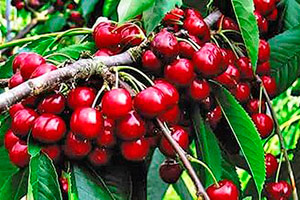 For fruit plants, the reaction of changing the direction of growth of the roots of one and several species of these plants is particularly interesting. From fig. 1 shows that the root system of two peach trees deviate from each other. The root systems of four apple trees also deviate from each other. On the contrary, the root systems of apple and cherry trees do not affect the direction of their growth.
For fruit plants, the reaction of changing the direction of growth of the roots of one and several species of these plants is particularly interesting. From fig. 1 shows that the root system of two peach trees deviate from each other. The root systems of four apple trees also deviate from each other. On the contrary, the root systems of apple and cherry trees do not affect the direction of their growth.
Let us consider in more detail the compatibility of the growth of woody plants in culture and in natural plant communities.
Even in ancient Greece, attention was drawn to the influence of some plants on others through volatile secretions. Feofrast reports the harmful effects of the smell of a number of growing cabbage on a vine, which shies away from this hostile smell. It was noticed that under the influence of the smell of cabbage and laurel the taste of the fruits of grapes and wine worsens. Nowadays, it was discovered that fragrant secretions of currants growing next to grapes are also transmitted to wine. In the writings of Pliny the Elder it is indicated that the grapes do not tolerate the presence of not only cabbage and other vegetables, but also hazel, and if they are nearby, it becomes frail and painful. As I said above, it hinders the joint cultivation of fruit, berry and vegetable plants and the growth of various types of walnut.
I. Rakhtenko indicates that other vegetation is completely absent in the white acacia plantations, and horse chestnut, fir, rose, lilac, viburnum, chubushnik inhibit the growth of other plants, including apple and pear. Barberry forms a large amount of berberine alkaloid, which strongly inhibits the growth of other plants. Academician V.N. Sukachev observed that alongside the common spruce, mountain ash, hazel, and raspberry get along well, despite the fact that their roots are strongly intertwined with the roots of spruce. Teen spruce and mountain ash appears and grows well in dense thickets of raspberries. It is noted that lilacs, Tatar maple, wrinkled roses and some other plants that are close to spruce trees suffer from this neighborhood very much. Observations also show that the roots of some tree species grow together when they grow together, as noted above (for example, in pine and linden, larch and linden, oak and maple oak, oak and linden), while the roots of others do not (in oak and acacia white, pine and aspen). This phenomenon is due to the influence of root secretions.
One of the best breeds that positively affect the growth of very many plants when they grow together is linden. Linden is also a very good neighbor for all fruit trees. The admixture of birch in plantations of Scots pine increases significantly the intensity of photosynthesis. Spruce-birch is preferable to pure birch forests.
Due to the accumulation of toxic substances in the soil by root excretions, there is a poor regeneration of young plants of oak, pine and other tree species in the old forests of these same species. Special experiments have shown the stimulating effect of such excretions of spruce and aspen on each other. Having watered an oak with waters with linden root excretions increased its elevated part by 23% in comparison with the control, while the intensity of photosynthesis increased by 40%. Pine root excretions have a negative effect on the accumulation of birch biomass. Root secretions of oak and common spruce, hazelnut, hornbeam, cherry, walnut, and ash have a high allelopathic activity.
The leaf litter of woody plants also has a large allelopathic activity. The bedding of beech, for example, retards the development of its seedlings, but it promotes the growth of pine. Strong growth inhibitors were found in the needles of spruce, fir, pine, in fallen leaves of beech, hornbeam, oak, acacia, maple, walnut, poplar, ash and other species. The aqueous compounds of these secretions greatly inhibit the growth of their own seedlings.
The inhibitory and stimulating effect of secretions of woody plants can also be used in practice. So, the crushed bark of trees and sawdust are used as herbicides for weed control and help to improve the growth and development of cultivated plants. A substance that acts as a natural herbicide has been isolated from coffee seeds. Seeds and leaves of alder increase the germination of soybean seeds and stimulate its growth. The joint growth of a birch tree with an irga, a narrow-leaved sucker, an acacia of yellow stimulated its growth.
Of great importance allelopathy is among fruit and berry species. So, in the experiments of I. G. Avdeev, it turned out that an apple-tree and a pear grow better with a single-species planting. These breeds are strongly inhibited by peach, golden currant, walnut. Excavations of their root systems have shown that in single-apple plantings, roots developed between the roots of different plants, intertwined with each other. The bulk of the roots went beyond the boundaries of the trunk circle. When planting apple cherries, root systems mutually intertwined. Sweet cherry roots were more powerful. The root system of apple trees in single-species plantings was located closer to the soil surface, and in joint plantings with cherries it lay under the roots of sweet cherries. Cherry has displaced the roots of the apple tree from the surface horizon to the lower ones, less fertile and less aerated. This has largely led to a weaker growth of the apple tree. In single-species plantings, the pear grew well; when it was planted together with the cherry, it developed less well. The roots of pears and cherries were located in the same zone, but they were weakly branched near the cherries. Most likely, pear root excretions are toxic to sweet cherries.
In the planting of apple and pear roots intertwined. Apple and pear looked weaker than in single-species plantings, which indicates the presence of some allelopathic antagonism. Pear with walnuts grew poorly. The roots of the nut oppressed the root system of the pear. In single-species plantings, the root system of the nut was well developed. The apple tree growing together with the golden currant was oppressed, and the currant developed very powerful bushes up to 1.8 m high. The currant root system penetrated into the zone of the roots of the apple tree and gave it a lot of overgrowth. Obviously, the root excretions of apple trees stimulated the growth of golden currant. In the plantations where the pear was planted next to the golden currant, both plants were strongly depressed, which is explained by the mutual toxicity of the root exudates. When planting cherries with apricots, the above-ground parts of them developed well, the root systems abruptly moved away from one another. There is a strong antagonism of peach and apple. The peach root system freely enters the zone of the roots of the apple tree, causing them to die and displacing them. It was discovered the intergrowth of the roots of apple trees. Such plants in this case looked much better than non-merging. Numerous experiments have shown that apple and pear and, in general, all pome fruits can be planted after stone fruit, plum and cherry after pome fruit, plum after peach, currants and gooseberry after raspberry and strawberry, as well as after pome seeds and stone fruit, raspberry after strawberries, honeysuckle - after all these crops. Currants and gooseberries can be grown immediately after each other and together. Very quickly, already by the 5th year of growth, the strawberry soil is very tiring.
Apricot and apple plants inhibit the growth of wheat roots, soybeans, peas, maize, cherry plants inhibit the growth of wheat and maize roots, and the growth of soybean roots even stimulate. Soybean is most sensitive to plin colins, wheat to apricot and apple colins. The growth of corn roots Colins peach, plum and apple inhibit 2 times stronger than the growth of the roots of peas. Cola grapes very strongly inhibit the growth of barley roots. Growth of wheat roots is almost not reduced, but on the other hand, growth of soybean roots is significantly stimulated.
Elm affects the grapes, and this effect acts very negatively. If you plant several seedlings in one pit or sow different fruit breeds, then stone fruit at the beginning is depressed, and by 8 years of life they can completely lead to the death of an apple tree and a pear. The study of the allelopathic features of the actinidia argut, viburnum, cornel, magnolia vine and Japanese henomeles showed that the most depressing effect on the growth of other plants had extracts from the fallen leaves of cornel and viburnum and root residues of viburnum and cornel shoots. These extracts strongly suppressed the growth of wheat, corn, and the growth of sea buckthorn. Extracts from henomeles leaves inhibited the growth of their own seedlings. Little effect on the growth of other plants secretion of actinidia, and in the bean plants, this even showed increased growth.
Black currant is compatible with gooseberry and colored currants, as well as with honeysuckle. But, according to some, it has a depressing effect on the apple tree, pear tree and black rowan tree. According to others, she is quite tolerant of them, and from my experience I confirm this. Honeysuckle is compatible with seed and stone fruit. Barberry inhibits black and colored currants and sand cherries. Birch oppresses ordinary cherry, and hazel - Siberian cedar. There is a positive effect on the growth of mountain ash pears.
In connection with the inhibition of fruit and berry plants in culture, it is interesting to note that, under natural conditions, they, as a rule, do not create pure, single-species thickets. Apple, pear, cherry, cherry plum, different types of cherry, apricot, hawthorn, ashberry, different types of berry bushes are components of various plant communities. They grow mostly single trees, and even after abundant fruiting their seedlings do not appear within the crown, and under ordinary pine trees, for example, apple seedlings and pears grow close to the trunk. Under old trees of cultivated varieties of apple and pear, other tree species grow well. So, on the outskirts of Kiev there is an abandoned garden adjoining the Goloseevsky forest. The diameter of the crown of apple trees reaches 7 m, pear - 9, height 6-10 m. The area under the crowns of apple and pear was occupied by hornbeam seedlings (20-25 plants per 1 sq. M, height 1-3 m, stem diameter - 0.8 -2 cm). In addition to the hornbeam, there are seedlings of linden, hazel, Norway maple, svidiny, walnut and cherry. And all these breeds are not oppressed.
On the former old farms in Belarus, in the forest where the old gardens remained, under the canopy of old trees, apple and pear grow superbly, without meeting any oppression, seedlings of hornbeam, beech, oak, linden, hazel, cherry plum by 20-25 plants per 1 sq. . m. Their height is 3-5 m. On the slopes of the Fergana Ridge, Kyrgyz and plum apple trees grow in walnut forests. Walnut seedlings appear under apple trees and on clearings; apple seeds germinate under the canopy of the cherry plum. Seed productivity of apple trees is high (up to 150 seeds per 1 square meter), however, its seedlings near old trees are very rare. It reproduces mainly by root suckers, young trees grow far from their mother trees. By the way, many fruit crops (cherries, plums, raspberries, strawberries, etc.) have a clearly visible desire to remove offspring from the mother plant.
On the slopes of the Trans-Ili and Dzungar Ala-Tau ranges, the apple tree forms mixed (with aspen, hawthorn, dogrose, buckthorn, spruce, honeysuckle, barberry, raspberry, currant, apricot and other plants). Pure apple thickets is very rare, although precipitation is sufficient and in the harvest years the fallen fruits cover the ground under the trees in a continuous layer. Consequently, monoculture is not characteristic of the nature of wild species of apple and other fruit, from which cultivated varieties.
Most researchers explain what has been said that plants of wild species are more resistant to the allelopathic effects of other plants, as well as a corresponding neutralization of the secretions of some plants with the secretions of others. In any case, constant chemical antagonism can now be spoken with certainty only about fruit and berry plants and some other woody ornamental and forest plants cultivated under conditions of culture or adjacent to them.
The main conclusion from the above article: the garden should be laid only from homogeneous or compatible arcs with other fruit, berry and ornamental woody plants. Sealing the garden or repairing it when the old varieties die or are replaced with new individual plants should be done only by plants of the same breed, taking measures to neutralize the excretions of the root residues in the soil after grubbing. When a radical reconstruction of the garden should be sure to follow the order of change of species of fruit, berries and ornamental woody plants. In the aisle of the garden should be planted herbs, vegetables, strawberries, except potatoes, corn, sunflower, pumpkin and zucchini. These cultures worsen the growth of fruit, berry and ornamental woody plants due to the allelopathic action, or due to a strong depletion of the soil and its rapid dehydration. Fruit, berry and ornamental woody plants of different breeds that are incompatible with each other should be grown on different spaced parts of the garden plot.
Although, according to the studies of A. M. Grozdinsky, out of 827 species in 62 families, the presence of inhibitory substances in all families was found, representatives of the families of buttercups, rostocks, and some others differed most, the families of pine, flax, cereal, amaranth, and some others. Therefore, when growing any plants in a culture, it is necessary to look at their chemical compatibility.
In addition to chemical interaction in the process of co-growth of plants, electrical factors and some other factors also affect their growth, which will be discussed in another article.
(Ural Gardener № 13, 14, 2013)
The results of the experiment on re-planting fruit plants
Immediately after the publication of the article “On the Chemical Compatibility of Woody Plants” (“CSS” No. 13, 14/2013), a familiar gardener woman called me at home and complained why the article did not come out earlier. It turned out last year she uprooted 5 old apple trees and immediately planted 5 young apple seedlings in their place. And after reading this article does not know what to do. In addition, according to her statement, if you transplant young saplings somewhere else, it absolutely violates the entire planning of plantings, the development of which she spent a lot of time. Therefore, she asked me to find an example showing the real damage of such a replanting of an apple tree after an apple tree, and to publish its results. Since, as she put it, there are a lot of such ill-informed gardeners in the matter of compatibility of fruit trees, and it is very expensive to redo the work already done, and often it is simply impossible.
It took several days to find an example of such an experimental re-planting of fruit plants in place of uprooted fruit plants of the same species, until T. Ivleva's article “The Development of Fruit Trees” was found in the Scientific Works of the Voronezh Agricultural Institute. when landing on the uprooted gardens. " Studies T. P. Ivleva conducted field and vegetation methods. There were the following variants of experiments:
1. Control. The garden is planted on a plot where only field crops were grown.
2. The garden is planted on the plot for the third year after uprooting 45-year-old apple trees.
3. The garden is planted on the site immediately after uprooting 25-year-old apple trees.
In all cases, the planting was carried out by 2-year-old apple seedlings of the Michurin Memory and Northern Synapse varieties, and the rootstock was seedlings of Antonovka ordinary. Before planting in all cases, plowing to a depth of 35-45 cm was carried out with preliminary introduction of phosphate and potash fertilizers. After planting the seedlings mulching pristvolnyh circles with manure and 2-fold watering was carried out. Good conditions for plant growth were created in all areas. Plant survival rate in all experimental plots was high at 99.7%, however, plant growth and development were different.
Measurements of shoot length, shtabta thickness showed that good growth was observed in trees of the control variant. The average length of the sprout continued in the first year of growth was 33 cm, in the second - 55 cm. The stem diameter increment was 0.95 cm. Trees satisfactorily developed, planted two years after uprooting 45-year-old apple trees (variant 2): the length of the sprout continued there was also 22 and 28 cm, respectively, the diameter of the bole is 0.46 cm. Very slow growth, poor development was noted during 3 years of observation of the trees planted after the uprooting of a 25-year-old garden, where the length of the shoot in the first year was 45, in the second ¬ 20 and in the third year - 31 cm. Gain to the dia pa bole was also the smallest - 0.23; 0.4 and 0.63 cm, respectively. The total growth in all lengths of shoots was 1.5–2 times higher than the variant 1, the data for variant 2 were somewhere in the middle.
In order to clarify the causes of slow growth, a soil nutrient check was carried out at all three sites. Agrochemical analyzes of soil for humus, phosphorus, potassium, nitrogen, trace element content and acidity were made. The test results showed that in the soil from under old apple trees there was no nutrient depletion, acidity values were normal, and the trace element content was also normal.
To make the results of research based on field experience more unambiguous, tests were also carried out using vegetation experience. Vegetation experience was as follows. In polyethylene vessels, with a capacity of 8 kg of soil, seedlings of apple, pear, cherry were planted, apricots were sown with seeds. The vessels were filled with soil from the roots of old apple trees. The growing season was repeated for two years. In the fall, the plants were dug out, the length of the shoots was measured, the thickness of the stabs was measured, the size of the root system was determined. Measurements showed that seedlings of apricot and cherry grew best on soils from under the apple trees, for which the diameter of the trunk grew by 0.4 and 0.33 cm, the length of the shoots was 87 and 43 cm, and the root system developed perfectly. Seedlings of apple trees grew very weakly, almost no roots were formed, the length of the shoots was 12 cm, the diameter increase of the stem was 0.11. The good growth of apricot, plum and cherry trees “over the apple tree” was also noted in the field experiment.
Thus, research on the basis of field and vegetation experiments clearly showed that cherry, plum, apricot, pear and apple are very poorly developed on soils from under the uprooted apple orchard. The main reason for the poor state of an apple tree when planting “over an apple tree” is the accumulation of toxic substances — colins — in the soil as a result of the vital activity of the root system and the decomposition of its residues, in the case of garden uprooting. Eliminating the harmful allelopathic effects of toxic substances in a particular case can only be done by changing crops (for example, planting instead of pome fruit stone fruit plants) or growing for 3-5 years after the garden has been uprooted, and in some cases, vegetable crops. It is better to plant the apple tree “over the apple tree” 3-5 years after the uprooting. Interesting from the results of research is the small change in the amount of nutrients, acidity, microelements in the soil with many years of use of the land for gardens with normal care of plantings.
It seems to me that the results of the studies performed in this experiment turned out to be so obvious that they do not require any additional explanations. Of course, it is impossible to plant an apple tree “on an apple tree”, a pear “on a pear”, a plum “on a plum”, etc., as I wrote in the above article. Well, I can advise a familiar woman to call me - in the spring, replace the planted apple seedlings with the plum, cherry or apricot seedlings. Or, temporarily, by 2-3 years, transplant them to a place where there are no remnants of the roots of uprooted apple trees, followed by transplanting into the old place, which at least significantly reduces the consequence of the presence of residues of unrooted roots.
V.N. Shalamov
It may seem that to grow a garden at the dacha is very simple, but it is not quite so. Trees, of course, not people, but also can be unhappy with the neighborhood with one of the inhabitants of the garden. Each of them has its own character and individual characteristics, so not everyone can get along with other plants in the garden.
What plants can coexist with each other?
This is the first thing you need to think about when planting trees. Scientific compatibility of plants is called allelopathy, which can be negative and positive. In the first case, shrubs and trees "fight" with each other and cannot grow and develop normally, and in the second, the neighborhood turns out to be mutually beneficial and beneficial.
Pear, rowan and apple trees get on together perfectly - they can be planted next to them without any fear. But walnut is very bad for its neighbors. This is a toxic tree that damages all fruit crops, so it is best to plant it on the outskirts of the site or near the fence, away from other plants.
Picky cherry, too, does not favor other trees next to him. You should not plant apricot, pear, plum near it, otherwise they will develop poorly, and may even die.
Compatibility of apple and cherry
Apple trees are very docile trees - next to them, many plants feel good. True, the apple is not always beneficial. As for cherries, she likes to coexist with cherries, cherry plums, cherries and apples. Cherries and cherry plum are related plants for cherries, so with them it will feel good even in tight spaces.
Cherry and apple trees get along well with each other, but when planting it is necessary to maintain a distance. If the trees are short, then between them you need to leave 2.5 meters, and if the high - 4 meters. The reason is that the roots of these plants are oppressive to each other, and if you plant them close, the trees will die.
Apple and cherry prefer to grow on the same soil - medium acid or close to neutral. To get such a soil, it is worth adding peat or soil from coniferous forests to the ground. If it was uprooted old stone tree - cherry, plum or sweet cherry, then it is worth planting seed species - an apple or a pear near this place.
Differences between cherry and apple trees
Despite the fact that these plants are good neighbors, there are quite a few differences between them. For example, if you are unlucky with a variety of apple trees, and a wild bird is caught, then by no means will it be possible to obtain good and tasty fruits from it. In relation to cherries, everything is wrong - any tree is able to give an acceptable yield.
There are a few more differences. Apple tree loves to coexist with conifers, and for cherries it is highly undesirable. The apple tree will grow on the acidic soil; for a cherry, such an environment is completely unacceptable. Apple trees do not necessarily need a lot of light, it will take partial shade, whereas cherries need only a sunny place for normal development.
Cherries have a more capricious disposition compared to apple trees, but if you observe the rules of planting, then these crops can coexist peacefully side by side and bring a rich harvest.
Many gardeners are interested in how to properly place fruit and berry crops in their plot, so that they grow well and bear fruit. As in a small garden area, different varieties and breeds will influence each other. After all, laying a garden is always preceded by a lot of preparatory work. Assessment and selection of sites is carried out taking into account the suitability of the soil for planting, and mistakes made are often difficult to correct.
Our gardeners often do not have to decide on the choice of sites. But it is important to know their features and, if possible, try to correct the shortcomings.
Bad soil for garden bookmarks
Sprayed, highly podzolized, marshy, stony and dense clayey soils are undesirable for the garden. The marshy, closed trenches and hollows are completely unsuitable for laying a garden. For fruit plants dangerous areas with high standing of groundwater. On such sites the plants are short-lived. The roots of the fruit trees, reaching the water, die off from lack of air, then the ends of the branches dry up, and the skeletal branches begin to die off.
Groundwater level at planting
When planting apple and pear, the groundwater level should be no closer than 2 m from the soil surface. Cherry and plum with less deep-reaching roots can be planted at a depth of groundwater not closer than 15 m, and currants, gooseberries, raspberries - if there is groundwater at least 1 m.
Useful and harmful trees - neighbors of the garden
It has been experimentally established that if tree species such as oak, maple, linden, bird cherry grow near the garden plot, fruit plants will grow well. But if in the vicinity grow alder, sedge grass, horsetail - all this speaks of water logging and increased acidity of the soil.
Usually in a small garden area grow various pome, stone fruit, nut and berry crops. Apple trees, pears, cherries, plums, raspberries, gooseberries, currants and nickname are compatible with each other, which allowed them to be grown together in a limited area of the garden for centuries. A big mistake when placing fruit trees are thickened planting. Each fruit plant for normal growth and fruiting requires an adequate amount of soil and air throughout its life.
Distance between seedlings
When establishing the distance between fruit seedlings during planting, it is necessary to consider, first of all, the size of the crown in width. The closure of the crowns of neighboring trees, and even more so the intertwining of the branches, worsens the illumination inside the crown, as a result of which premature death of the overgrowing and fruit branches inside the crown occurs. In addition, spraying, pruning and harvesting are greatly hampered with closed, intertwined crowns.
Temporary compacted planting can be carried out by placing currants, gooseberries, and strawberries in the rows of young fruit trees. As the trees grow, the latter are removed from the garden row spacing.
An excessive increase in the distance between the berry bushes and fruit trees is also impractical, as the number of plants per unit area decreases, and the total yield of berries and fruits decreases.
Placement of trees on the site
Fruit crops have different winter hardiness, so they need to be placed so that tall apple trees, pears grow from the north or north-east side of the plot, do not shade other plants and protect them from strong winds.
On private plots, where the processing is carried out mainly by hand, an apple tree and a pear can be placed at a distance of 4-5 m from each other, and cherry and plum at a distance of 2.5-4 m.
Pollination of plants
In addition, the placement of varieties of each crop must be such that it promotes the best mutual pollination or, as they say, the best cross pollination. In fruit species (apples, pears, plums, cherries), there are varieties of self-fruiting and self-fruitful. The first ones tie fruit when pollinating with their own pollen, the latter - only when pollinating another variety. Almost all of our fruit self-sterile, and for normal pollination and fruiting need to plant several different varieties.
Observations have shown that between different varieties of fruit trees, which should pollinate each other, the distance should be no more than 20-25 meters. Bumblebees, bees carry pollen from one variety to another.
Cherry, sea buckthorn, and raspberry produce shoots; therefore, it is impossible to plant strawberries in close proximity to them. In addition, raspberries and strawberries have a common pest - strawberry-raspberry weevil.
Placing fruit trees on the plot
Often, the gardener has a question: how much and where to plant plants of a particular breed? Placing plants on the site - a personal matter. Most garden plots are of consumer value, i.e., they are used to obtain a variety of garden products to meet the needs of the family for berries and fruits.
Some gardeners deliberately give preference to one or another crop, such as strawberries, and get crops that exceed their own needs for sale. There are gardeners who are interested in not just the harvest of fruits, but the cultivation of some rare species and varieties grown in an unusual way, such as grapes, walnuts, etc.
The photographs are examples. In the first scheme - Placement of fruit trees in the area 4 acres, in the last photo - the layout of the site 24 x 40 m.

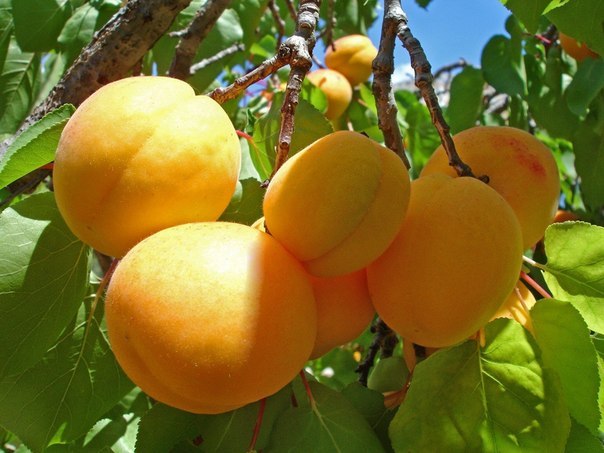
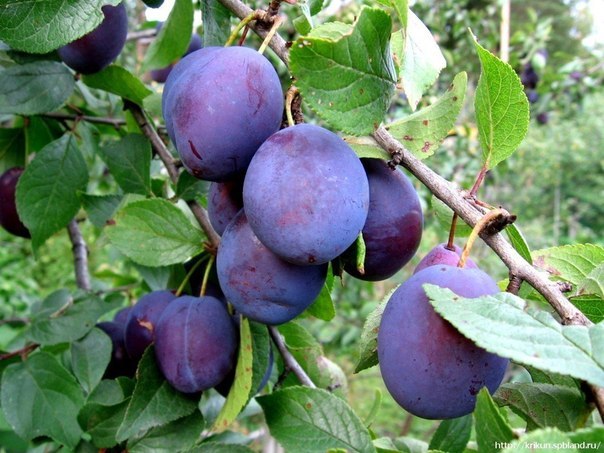
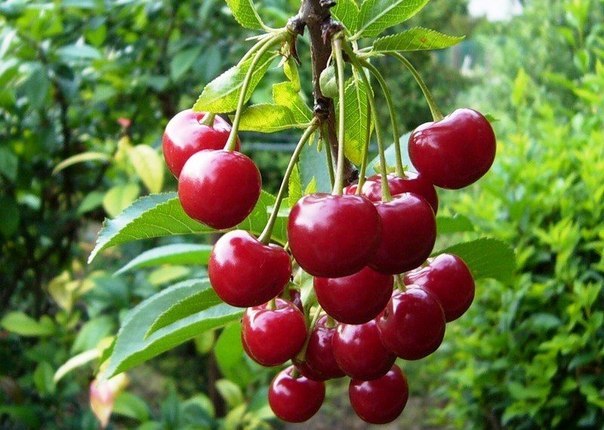
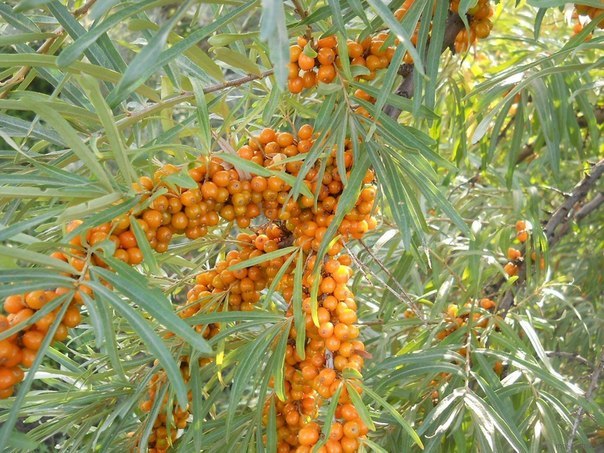
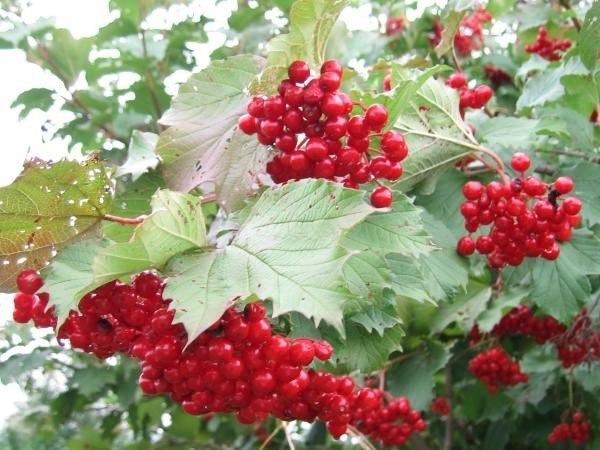
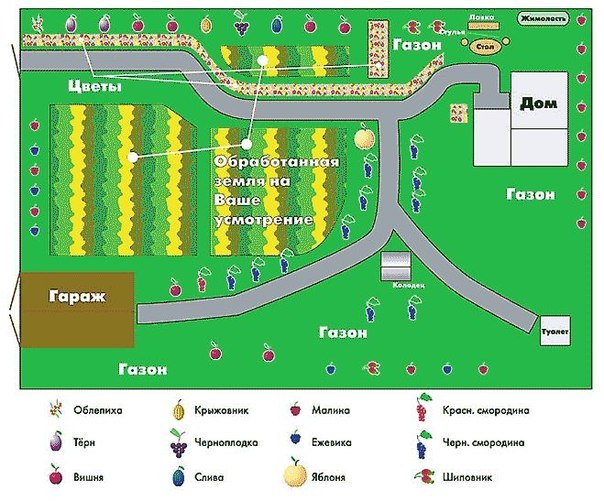
All plants are struggling with competition through the strategy of dispersal, seizure and retention of territory. This category includes:
- growth rate;
- fertility;
- seed propagation methods;
- vegetative propagation activity.
Almost all species to one degree or another use chemical weapons against competitors and enemies. These are substances that inhibit the growth of other plants. However, it happens and vice versa, neighbor's phytoncides help another plant to develop. This is the essence of compatibility of different types.
Usually those plants that have a bright and strong aroma, especially actively use chemical weapons. Moreover, it can affect both other plants and this species. A striking example is that which perfectly protects itself from lovers of biting leaves or drinking juice.
Black currant has a strong and even pungent odor. This is a sign of the chemical superiority of this species over others. Next to it is extremely undesirable to plant red and yellow currants. From this neighborhood will be bad for everyone.
It is desirable to combine strong and chemically active black currants with their own kind. From shrub plants suitable for her. From the trees such a neighborhood makes good

